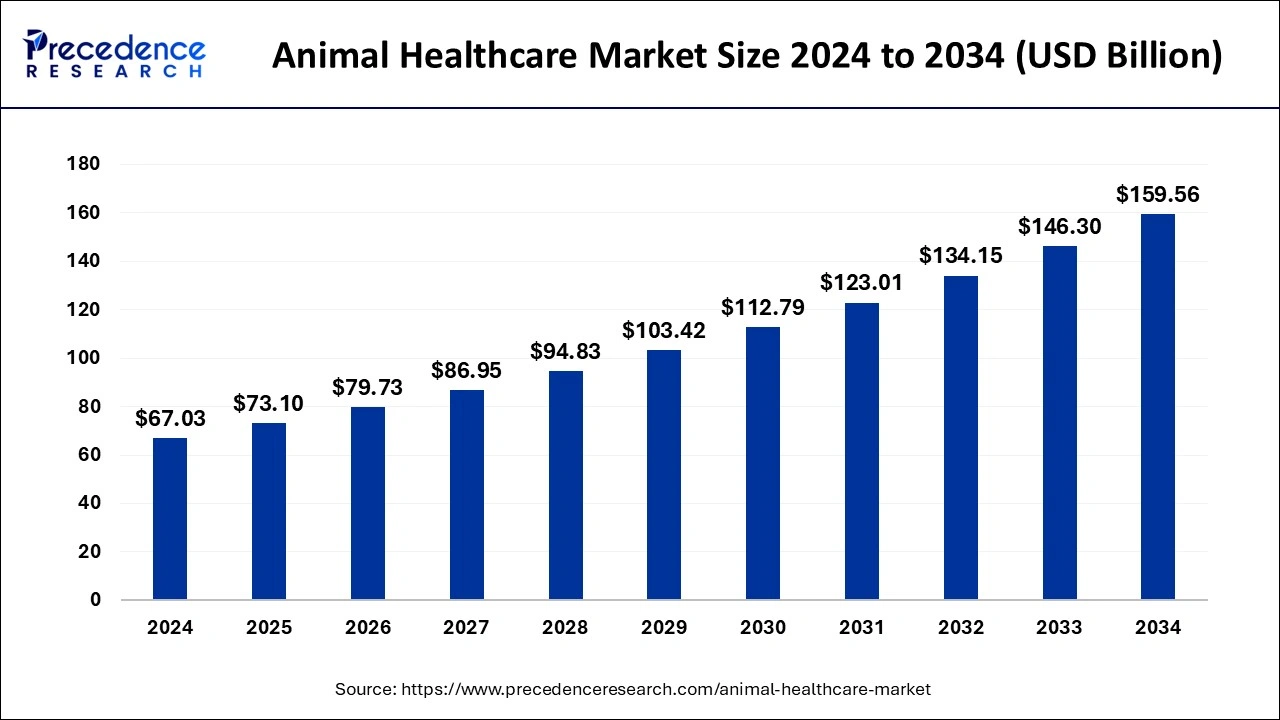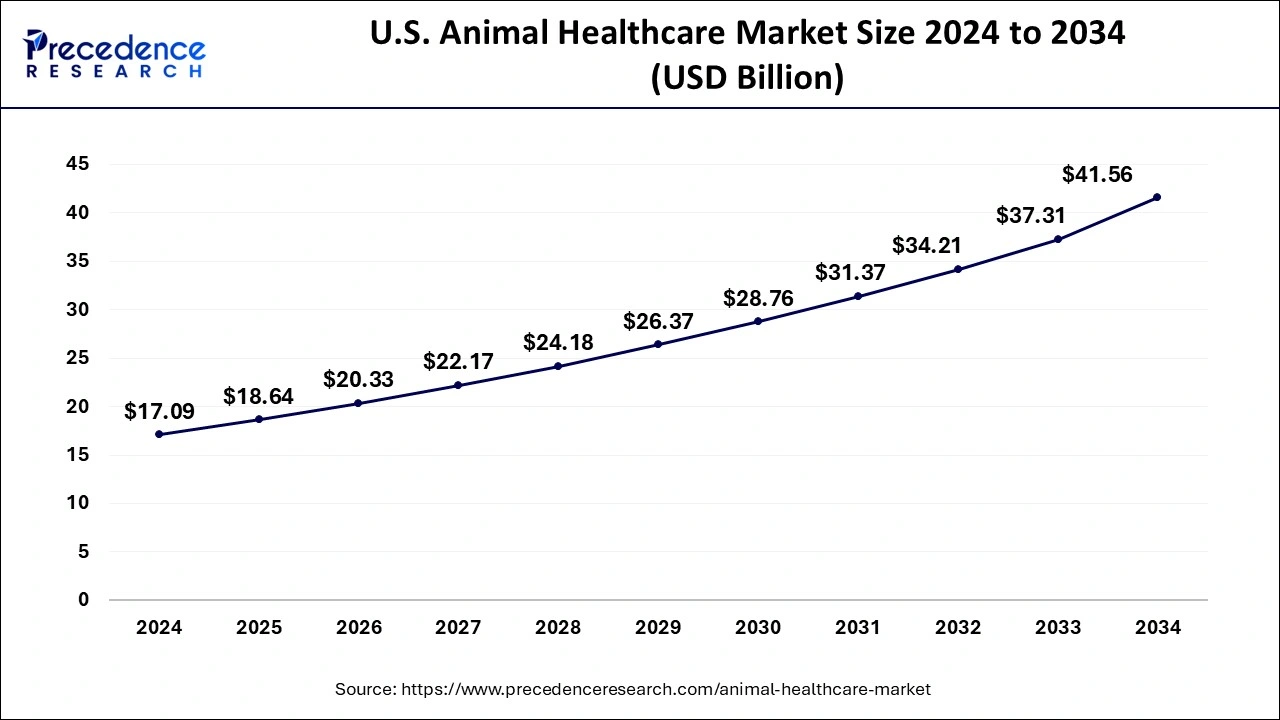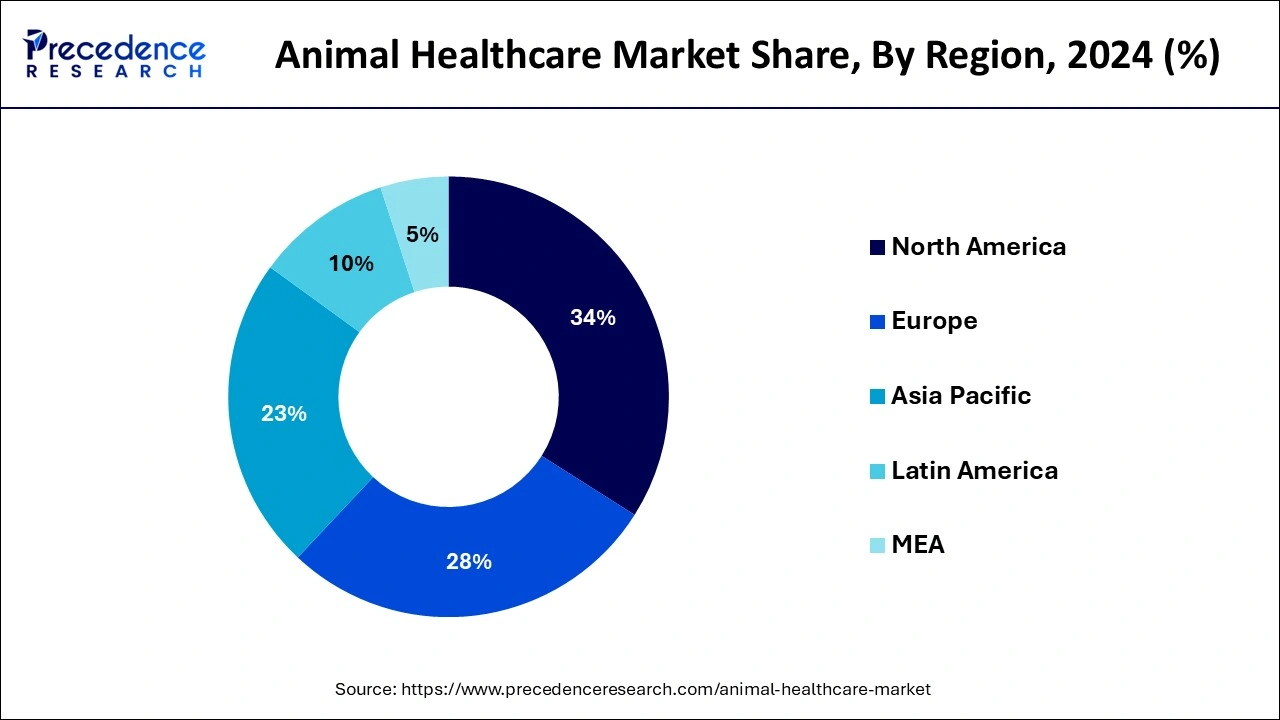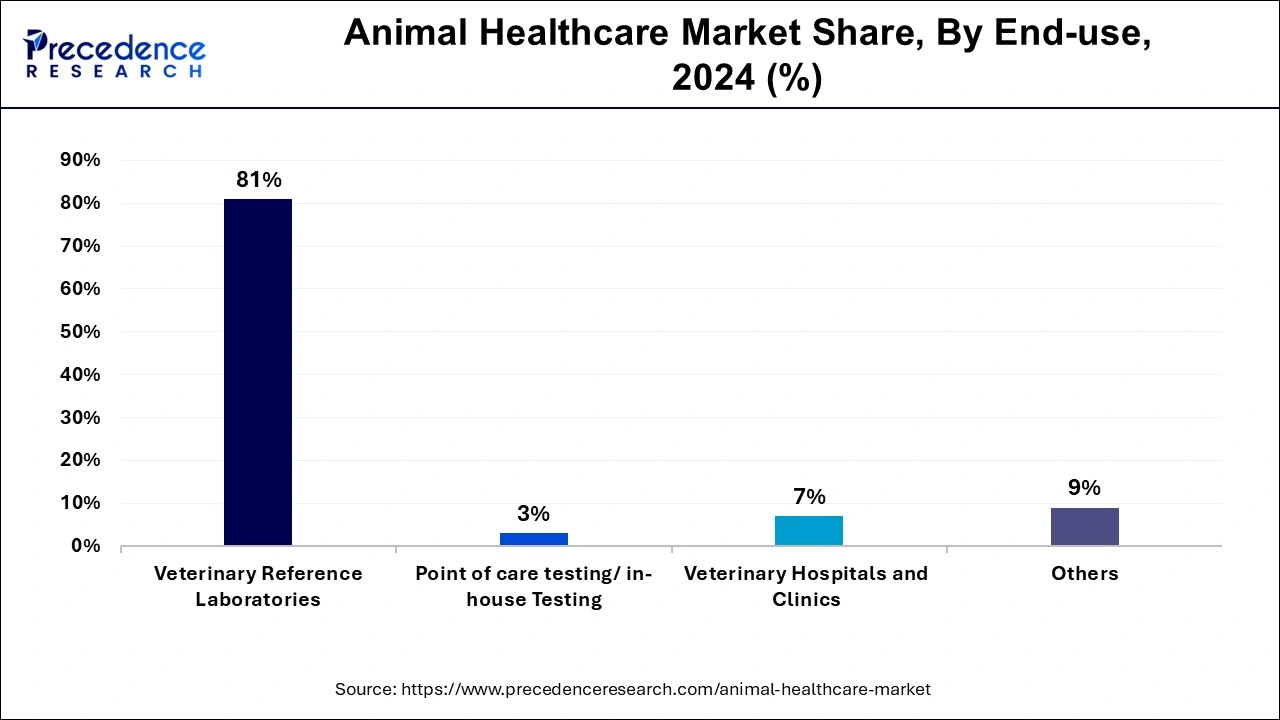May 2025
The global animal healthcare market size is estimated at USD 67.03 billion in 2024 and is anticipated to reach around USD 159.56 billion by 2034, expanding at a CAGR of 9.06% from 2025 to 2034.

The integration of AI in animal health (AH) helps manage complex concepts such as epidemiology and prediction, animal treatment, and host-pathogen interactions. Veterinarians are integrating AI into their applications primarily for diagnostic imaging and medical record management. AI-driven monitoring systems can analyze large amounts of data with high efficiency to detect animal health problems or abnormal behaviors early.
This tool reduces the workload of farmers and veterinarians. The most successful AI applications use clinical data and deep learning to diagnose diseases. X-rays, CT scans, and MRIs are used to create AI-driven algorithms that can accurately analyze medical images. Real-time animal monitoring through AI-based analytics can help improve animal health and save lives. Remote monitoring allows veterinarians to detect early signs of stress and intervene quickly, contributing to the growth of the animal healthcare market.
The U.S. animal healthcare market size was evaluated at USD 17.09 billion in 2024 and is predicted to be worth around USD 41.56 billion by 2034, rising at a CAGR of 9.29% from 2025 to 2034.

North America dominated the animal healthcare market with the largest market share of 34% in 2024. This is attributed to a wide range of concrete initiatives taken by government animal welfare organizations that are continually trying to enhance animal health. In addition, technological advances, an increase in the number of pet owners, and an increase in the frequency of zoonotic diseases are likely to drive the animal healthcare market expansion in this region.
Asia Pacific is expected to grow at a double digit CAGR of 12.4% during the forecast period. This region’s rapid growth is thought to be the result of constant research and development investments by major companies in the animal healthcare market as well as their efforts to sell branded and generic treatments at affordable rates.

The governments all across the world are focusing on enacting and enforcing stronger animal healthcare legislation and regulations. The animal healthcare market growth will be supported by animal adoption and protection, improved treatment facilities, emergency healthcare systems, vaccination drives, immunization programs for animal healthcare, and birth control. The financial support for animal shelters as well as funding for multiple veterinary research laboratories dedicated to containing advanced zoonotic and foodborne diseases, will help the animal healthcare market growth significantly.
Europe is expected to grow significantly in the animal healthcare market during the forecast period. The growing awareness as well as pet ownership in Europe is increasing the demand for animal healthcare facilities. At the same time new products are also being developed, which enhances the animal healthcare. Thus, all these factors along with the government support, promotes the market growth.
UK
The animal healthcare facilities in the UK are increasing, due to increasing pet ownership as well as rising awareness about animal health. At the same time, new research and developments are also being conducted to develop various medications for different animal diseases.
Germany
In Germany, animal healthcare facilities are providing various treatment options for animals, which in turn are attracting the population. At the same time, technological advancements are also enhancing these facilities. Furthermore, these developments are also being supported by the government investments.
| Report Coverage | Details |
| Market Size in 2024 | USD 67.03 Billion |
| Market Size in 2025 | USD 73.10 Billion |
| Market Size by 2034 | USD 159.56 Billion |
| Market Growth Rate from 2025 to 2034 | CAGR of 9.06% |
| Base Year | 2024 |
| Forecast Period | 2025 to 2034 |
| Segments Covered | By Animal Type, By Product, By Distribution Channel, By End Use, and By Treatments |
| Regions Covered | North America, Europe, Asia-Pacific, Latin America, and Middle East & Africa |
The pharmaceutical segment accounted for the largest market share of 44% in 2024. On the basis of continuing improvements in veterinary pharmaceuticals, it is expected to maintain its dominant position during the projection period. The anti-inflammatory medications, antibiotics, parasiticides, and other pharmaceuticals are among the most common.
The veterinary diagnostics segment, on the other hand, is predicted to develop at the quickest rate in the future years. The expanding number of veterinary practitioners and their incomes in industrialized nations, rising animal health expenditure, and increased zoonotic diseases incidence are all contributing to segment expansion.
the production animal segment led the global market in 2024. The segment’s significant market share can be attributed to government healthcare organizations’ worldwide concern for food safety and sustainability.
The companion animal segment is the fastest growing segment of the animal healthcare market in 2023. The policymakers in numerous countries are aiming for overall food security, which encourages large scale food production and increases animal husbandry.
The hospital/ clinic pharmacy segment generated the highest market share in 2024. The segment’s growth has been aided by an increase in the number of hospital pharmacies as well as a high procedural volume as a result of frequent readmission of pets for treatment.
The retail pharmacies segment is fastest growing segment of the animal healthcare market in 2024. For the distribution of drugs and vaccines, major producers rely solely on certified veterinarians and authorized wholesalers.
The veterinary reference laboratories segment contributed the highest market share of 81% in 2024. The segment’s leading market share is due to a variety of applications including clinical pathology, toxicological tests, and therapy. In veterinary hospitals and clinics, the provision of a wide range of therapeutic and diagnostic solutions is a high impact rendering growth driver for this industry.

The point of care testing/in-house testing segment is projected to grow at a solid CAGR during the forecast period. The climatic change and globalization are predicted to increase the frequency of zoonotic illnesses, which will boost demand for diagnostic procedures which will drive the point of care testing/in-house testing segment in the next years.
By Animal Type
By Product
By Distribution Channel
By End Use
By Treatments
By Geography
For inquiries regarding discounts, bulk purchases, or customization requests, please contact us at sales@precedenceresearch.com
No cookie-cutter, only authentic analysis – take the 1st step to become a Precedence Research client
May 2025
October 2024
July 2025
August 2024